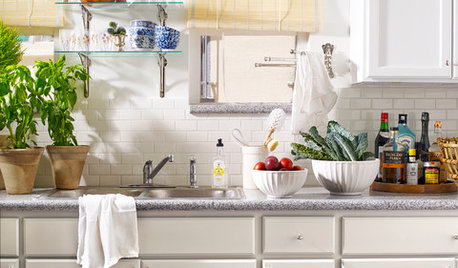crock pickels raves
two weeks into the fermenting and are they ever good.
i did two crocks of boston pickling and one of market more. the boston pickling is head and shoulders above the market more. they retain there crispness far better.
the most common remark is "the best pickle i have ever tasted".
i have 12 gallons of pickles and i don't think it will be enough.
i will bottle this batch next week and start a new batch.
the receipt i used is up to the current standards.
i got it off ot the internet and compared it to the standard.
here it is.
Crock Pickles
"Scum"
It isn't hard to make crock pickles, but not many people make them today. Typically they are too much work, and what do pickles cost in the store? Not that much. But also how would you feel about that microorganism floating on top, that yukky looking stuff floating on top, which will hereafter be referred to as the "scum".
Fermenting causes the pickles to cure. That is why they have a scum. Don't worry either, about that strong odor. That is a part of the plan. They have to be in the crock at least three weeks to complete the process of fermentation. During that time they will change in color from bright green to olive green or yellow green and the white inside will become translucent. Before that they are half cured pickles. When they arrive at your favorite state, you can take them out, or you can allow them to stay in the crock all winter which is what great grandmother use to do, and the way they were stored at the general store in a pickle barrel.
The natural complement to the organic gardener is the organic food preserver. The organic principle involved in making crock pickles is not to overwhelm the capacity of the salt and vinegar to control the microorganisms. The pickle brine doesn't act by killing the way canning does. Instead its effect is to drive the organisms into a nonreproductive state..spores. The more contamination there is in the food at the moment you put it into the pickling solution, the greater the risk.
If you make pickles according to all this advice, be brave when you see the scum arrive on them. Organisms called false yeasts grow on top of the pickle brine. They are eating the organic acid formed during the initial fermentation. Even mold doesn't hurt unless it touches the pickle, so don't let the liquids get too low. Your pickled food must always be kept completely covered by the protective brine, preferably by a safety margin of at least two inches. The water will be slowly evaporated as the winter passes, so you must add more at intervals.
Typically twenty gallons of crock pickles made a year for a family and none would be left come spring. As the year moves on they aren't as tastey as canned pickles. But time and money saved during the frantic harvest season, when you don't know whether to snap, pop, can, or cuss, made the crock pickles seem like a good idea.
Don't even think about making pickles from the grocery stores waxed cucumbers. The brine cannot penetrate the wax. These have to come from your, or a neighbors garden. Too large a cucumber gets pithy in the center. Too yellow a cucumber that is overripe, is one to be passed over, also. Keep watering those cucumbers in your garden patch while they are producing. A severe shortage of water causes cucumbers to become bitter.
If possible get the cucumbers into the brine quite soon after picking in the garden. If you must hold them, keep them cool. Cucumbers deteriorate rapidly. Wash them well to be sure all those small creatures are disposed of. Treat them gently to avoid bruising, as bruised areas, decay readily. Remove any blossoms because they are a source of enzymes that cause unwanted softening during fermentation.
Use pure granulated salt (pickling salt) not table salt. For the best flavor, and after all isn't this why you are doing this, use fresh spices. Grind your own when possible and you can raise your own dill. Don't make the pickles with heavily chlorinated water. For the container, a Crock, is traditional. However, glass jars, gallon or larger, enamel, plastic or wood containers work fine too. You'll need a lid which can fit snugly inside the container such as a plate to cover the pickles and hold them under the brine. Use a weight on the cover, like a scrubbed rock, or a jar filled with water to overcome the urge of those pickles to float up. The jar is easier to manage than the traditional stone which should be sterilized before putting on the brine. Over the top you will need a clean cloth to keep out all insects.
When your cucumbers are ready for pickling, your dill should also have matured its seed heads and be ready for cutting. You use stems, heads seeds and all to make dill crocks.
If you really are disgusted by the scum on top of your fermenting crock, here are some tricks. Take the cloth off once a week and wash it and let it rest in the brine. Some of the scum will stick to the top of the cloth, and can be transported away. You can also skim the brine once a week.
Actually, I don't think you need to resort to such drastic measures because the scum is always just on top and your pickles are fine underneath-- honest they are! Take one out, rinse it off, offer it to your husband. He'll offer to go pick more cucumbers for you immediately to make another crock full of fine pickles.
Crock Dill Pickles
These are similar to Kosher Dills: Start with a five gallon crock and twenty pounds (about half a bushel) of dill cucumbers. Dills are about 3 to 6 inches long. Get ready 3/4 cup of whole mixed pickling spice which you can buy at the grocery store, and a few bunches of dill. Put half the spices and a layer of dill into the bottom of your crock. Add cucumbers to within about five inches of the top. Put in the rest of the dill and spices on top of the cucumbers. Now decide if this crock is to be all eaten up within six weeks, or if should be a long term crock. In the former case, make a brine of 2 1/2 cups vinegar, 1 3/4 cups salt and 2 1/2 gallons water. In the latter case, double the salt and vinegar. Be sure the cucumbers are covered by at least two inches of brine. If need be you can make more brine or take out some cucumbers. Don't jam them down, as it bruises them. Now cover, weight, and put your cloth over the top. Scum will begin forming in a few days.
To can these pickles, just pack in the canning jars when they are done fermeting. Add some new dill to each jar. Cover with boiling brine, adjust jar lid. Place jar in boiling water and keep there for 15 minutes. Remove, tighten the lid, and you are done.
The Anything Dill Crock
Using the same principle as with cucumbers you can pick other vegetables too. Purple cabbage, nasturtium buds, beans, baby onions, cauliflower flowerets, green tomatoes. All go in raw except the beans, which are boiled for two minutes first. Mix in lots of dill. Three beans are a favorite.
Mama Mia ~~
Same crock dill only with red peppers added. Or garlic.
The old family recipe book laid a bag of white mustard seed on top. I think these seeds were gathered from the wild mustard plants growing locally. I don't even know where you could get white mustard seeds today. But I still see the wild mustard growing in the spring.
yummy!
Dean










ksrogers
Linda_Lou
Related Professionals
Grand Haven Landscape Architects & Landscape Designers · Parole Landscape Architects & Landscape Designers · Jackson Landscape Contractors · Arden-Arcade Landscape Contractors · Cicero Landscape Contractors · East Haven Landscape Contractors · Garland Landscape Contractors · Hoffman Estates Landscape Contractors · La Vista Landscape Contractors · Plymouth Landscape Contractors · Shaker Heights Landscape Contractors · West Covina Landscape Contractors · St. Louis Roofing & Gutters · Woodstock Roofing & Gutters · Easton Driveway Installation & Maintenancereadinglady
ksrogers